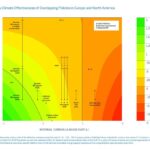Comparative advantage is a cornerstone of modern economics, explaining why nations benefit from specializing in producing certain goods and trading with others. But Who Invented Comparative Advantage? This article delves into the origins of the theory, its key principles, and its lasting impact on global trade.
David Ricardo: The Architect of Comparative Advantage
The concept of comparative advantage is attributed to British political economist David Ricardo. In his influential 1817 book, “On the Principles of Political Economy and Taxation,” Ricardo argued that even if one country is more efficient at producing all goods than another, trade can still be mutually beneficial. He illustrated this principle using the now-famous example of England and Portugal producing cloth and wine. Ricardo demonstrated that by specializing in the good they produce relatively more efficiently (England in cloth, Portugal in wine) and trading, both countries could consume more than they could produce in isolation.
Understanding the Core Principles
Comparative advantage rests on the idea of opportunity cost. This refers to the potential benefits an individual, investor, or business misses out on when choosing one alternative over another. In the context of international trade, a country has a comparative advantage in producing a good if it can do so at a lower opportunity cost than another country. This doesn’t necessarily mean it produces the good more efficiently in absolute terms, but rather that it sacrifices less in terms of other goods forgone.
Comparative Advantage vs. Absolute Advantage
It’s crucial to distinguish between comparative and absolute advantage. A country has an absolute advantage if it can produce a good using fewer resources than another country. While having an absolute advantage in producing a good is beneficial, it doesn’t dictate trade patterns. Comparative advantage, focusing on relative efficiency and opportunity cost, is the driving force behind specialization and trade. A country might have an absolute advantage in producing multiple goods, but it will still benefit from specializing in and exporting the goods where its comparative advantage is strongest.
The Lasting Legacy of Ricardo’s Theory
Ricardo’s theory revolutionized the understanding of international trade and provided a powerful argument for free trade policies. It demonstrated that trade is not a zero-sum game where one country wins at the expense of another, but rather a positive-sum game where all participating countries can benefit. This insight remains fundamental to modern trade theory and continues to inform policy debates on globalization, protectionism, and international economic cooperation. While the real world is more complex than Ricardo’s simplified model, the core principle of comparative advantage remains highly relevant in explaining patterns of global trade and the benefits of specialization.
:max_bytes(150000):strip_icc()/comparative_advantage_final-673793c0c1a6443f9901db13375798d9.png)
Conclusion
David Ricardo’s theory of comparative advantage remains a cornerstone of international economics. It provides a fundamental understanding of why nations trade, specialize in producing certain goods, and ultimately benefit from open markets. Although real-world complexities exist, the core principles outlined by Ricardo continue to shape global trade policies and underscore the enduring power of free trade in fostering economic growth and prosperity.
